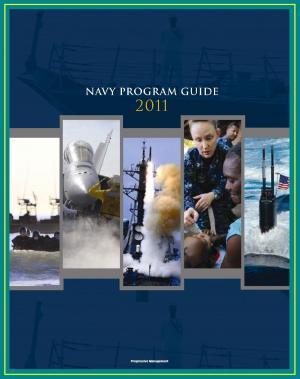21st Century Geothermal Technologies Program: Multi-Year Research, Development, and Demonstration Plan through 2025, Enhanced Geothermal Systems, Hydrothermal Fields, Reservoirs, Drilling
Nonfiction, Science & Nature, Science, Biological Sciences, Ecology| Author: | Progressive Management | ISBN: | 9781458080066 |
| Publisher: | Progressive Management | Publication: | February 22, 2011 |
| Imprint: | Smashwords Edition | Language: | English |
| Author: | Progressive Management |
| ISBN: | 9781458080066 |
| Publisher: | Progressive Management |
| Publication: | February 22, 2011 |
| Imprint: | Smashwords Edition |
| Language: | English |
Geothermal resources are available across the United States at varying depths, providing a ubiquitous buried treasure of domestic renewable energy. Enormous amounts of hydrothermal geothermal energy is available in the western United States, but theoretically, geothermal sources are available across the United States. The key to being able to use geothermal energy is to find a way to enhance geothermal systems lacking key natural characteristics. Natural geothermal systems depend on three factors to produce energy: heat, water, and permeability. While heat is present virtually everywhere at depth, water and permeability are less abundant.Geothermal technology is an attractive renewable resource because it can provide a constant source of renewable baseload electricity. While the sun and wind offer a large potential source of renewable energy that varies over time, geothermal technology is uninterruptible and can provide a stable baseload form of energy while diversifying the nation’s renewable portfolio. Geothermal energy has low environmental risk and impact. When used with a closed-loop binary power plant, geothermal systems emit zero greenhouse gas emissions and have a near zero environmental risk or impact. This Geothermal Technologies Program Multi-Year research, development, and demonstration plan by the U.S. Department of Energy through 2025 outlines the technology needed to make geothermal a major energy source. The most critical near-term Program activity is demonstration of Enhanced Geothermal Systems. The program has identified a key decision point for determining if EGS is technically feasible by 2015. During EGS workshops, geothermal industry representatives agreed that initial EGS demonstrations should occur where data already exists indicating a favorable target for potential EGS development and electricity production. Accessibility to the grid, cooperative industry partner(s) with available land, and a favorable environmental setting are all critical for site selection. Three steps will be important in pursuing EGS demonstrations goals: Validating the applicability of existing technologies; establishing a broad knowledge base covering existing technologies; thoroughly documenting the lessons learned to minimize duplicative efforts.
* This is a privately authored news service and educational publication of Progressive Management. Our publications synthesize official government information with original material - they are not produced by the federal government. They are designed to provide a convenient user-friendly reference work to uniformly present authoritative knowledge that can be rapidly read, reviewed or searched. Vast archives of important data that might otherwise remain inaccessible are available for instant review no matter where you are. This e-book format makes a great reference work and educational tool. There is no other reference book that is as convenient, comprehensive, thoroughly researched, and portable - everything you need to know, from renowned experts you trust. For over a quarter of a century, our news, educational, technical, scientific, and medical publications have made unique and valuable references accessible to all people. Our e-books put knowledge at your fingertips, and an expert in your pocket!
Geothermal resources are available across the United States at varying depths, providing a ubiquitous buried treasure of domestic renewable energy. Enormous amounts of hydrothermal geothermal energy is available in the western United States, but theoretically, geothermal sources are available across the United States. The key to being able to use geothermal energy is to find a way to enhance geothermal systems lacking key natural characteristics. Natural geothermal systems depend on three factors to produce energy: heat, water, and permeability. While heat is present virtually everywhere at depth, water and permeability are less abundant.Geothermal technology is an attractive renewable resource because it can provide a constant source of renewable baseload electricity. While the sun and wind offer a large potential source of renewable energy that varies over time, geothermal technology is uninterruptible and can provide a stable baseload form of energy while diversifying the nation’s renewable portfolio. Geothermal energy has low environmental risk and impact. When used with a closed-loop binary power plant, geothermal systems emit zero greenhouse gas emissions and have a near zero environmental risk or impact. This Geothermal Technologies Program Multi-Year research, development, and demonstration plan by the U.S. Department of Energy through 2025 outlines the technology needed to make geothermal a major energy source. The most critical near-term Program activity is demonstration of Enhanced Geothermal Systems. The program has identified a key decision point for determining if EGS is technically feasible by 2015. During EGS workshops, geothermal industry representatives agreed that initial EGS demonstrations should occur where data already exists indicating a favorable target for potential EGS development and electricity production. Accessibility to the grid, cooperative industry partner(s) with available land, and a favorable environmental setting are all critical for site selection. Three steps will be important in pursuing EGS demonstrations goals: Validating the applicability of existing technologies; establishing a broad knowledge base covering existing technologies; thoroughly documenting the lessons learned to minimize duplicative efforts.
* This is a privately authored news service and educational publication of Progressive Management. Our publications synthesize official government information with original material - they are not produced by the federal government. They are designed to provide a convenient user-friendly reference work to uniformly present authoritative knowledge that can be rapidly read, reviewed or searched. Vast archives of important data that might otherwise remain inaccessible are available for instant review no matter where you are. This e-book format makes a great reference work and educational tool. There is no other reference book that is as convenient, comprehensive, thoroughly researched, and portable - everything you need to know, from renowned experts you trust. For over a quarter of a century, our news, educational, technical, scientific, and medical publications have made unique and valuable references accessible to all people. Our e-books put knowledge at your fingertips, and an expert in your pocket!















